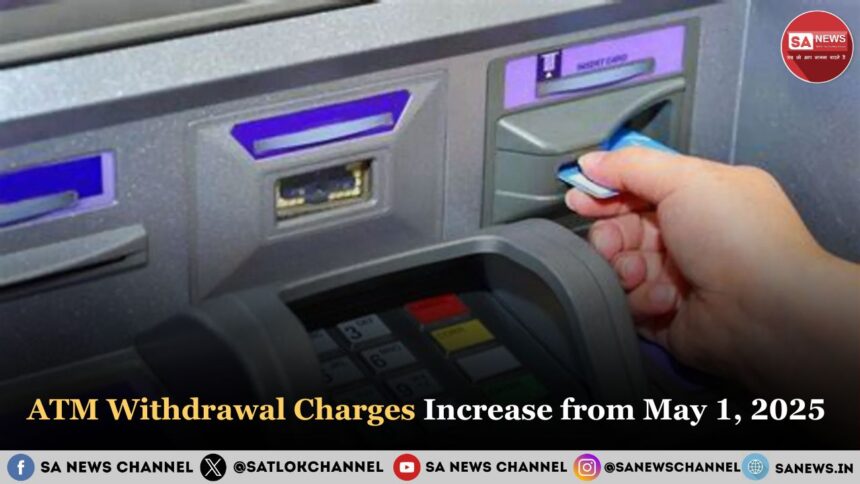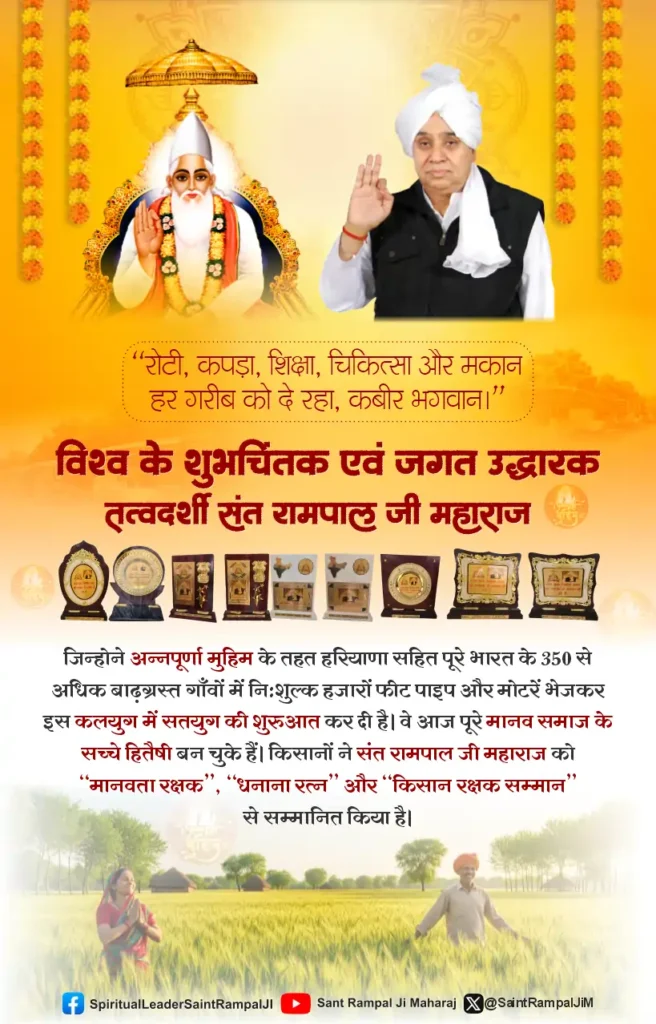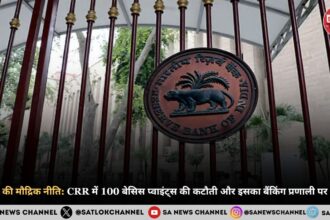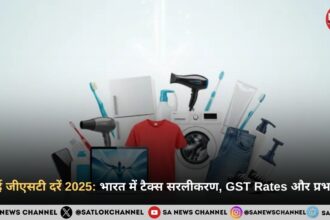ATM withdrawal charges from 1 April 2025: If you use ATMs frequently to withdraw cash, be prepared—starting May 1, 2025, it’s going to cost you more. Reserve Bank of India (RBI) set to raise ATM withdrawal charges, increasing the fee for surpassing the free withdrawal limit from ₹21 to ₹23 per transaction. This change has raised concerns among customers who rely on cash transactions. But why is this happening, and how can you avoid extra charges?
- ATM Free Transaction Limits & Charges
- Here’s how this limits currently work:
- ATM Interchange Fees and Their Impact
- How This Affects You?
- Why Are Banks Increasing ATM Fees?
- How Can You Avoid Extra Charges?
- The True Purpose of Wealth: Wisdom from Kabir Sahib
- FAQS about ATM withdrawal charges which will be increased from May 1, 2025
- Connect With Us on the Following Social Media Platforms
ATM Free Transaction Limits & Charges
Banks offer a limited number of free ATM transactions to their customers each month, after which withdrawal fees apply.
Here’s how this limits currently work:
For Cash withdrawal On Savings Account in Metro Cities: You can make up to 3 free withdrawals from other banks’ ATMs and 5 from your own bank’s ATMs.
ATM withdrawal charges from 1 April 2025: For Cash withdrawal On Savings Account in Non-Metro Cities:You get 5 free withdrawals at both your own bank’s ATMs and other banks’ ATMs.
For Current Account Holders & Premium Customers: Some banks offer a higher number of free withdrawals, or even unlimited transactions, depending on the account type.
ATM withdrawal charges from 1 April 2025: Once you exceed these free limits, you’re charged a fee for each withdrawal. From May 1, 2025, this fee will be ₹23 per transaction, making frequent cash withdrawals more expensive.
But this also brings up an important question: What happens when you withdraw cash from an ATM that doesn’t belong to your bank?
This is where ATM interchange fees come into play.
ATM Interchange Fees and Their Impact
Whenever you use an ATM that doesn’t belong to your bank, your bank has to pay an interchange fee to the ATM-operating bank. That fee is called the ATM interchange fee, and now the banks have decided to increase it too.
New ATM Interchange Fees (From May 1, 2025):
- ₹19 per cash withdrawal (up from ₹17)
- ₹7 for non-financial transactions (like checking your balance, up from ₹6)
How This Affects You?
ATM withdrawal charges from 1 April 2025: Banks typically absorb these costs for customers within the free transaction limit. But once you cross your free withdrawals, they pass on these expenses to you in the form of withdrawal charges.
■ Also Read: Smart Cities Vs. Traditional Cities: The Revolution You Can’t Ignore!
Why Are Banks Increasing ATM Fees?
Banks say there are key reasons behind this move:
- Rising Operational Cost: Increasing costs of ATM-related maintenance, security upgrades, secure empanelment, vaulting, and cash circulations.
- Inflation: Just like everything else, inflation has been eating away at the real value of all fees and bank charges, so the banks are changing them too.
- Promoting Digital Transactions: Since the government and banks are aiming to lessen the dependency on cash and strengthen digital payments, with the hike in ATM fees, some users may be pushed towards online transactions.
How Can You Avoid Extra Charges?
You’re someone who often uses ATMs, these changes could affect your monthly expenses. But don’t worry, there are ways to minimize or even avoid these charges:
- Plan Your Withdrawals Wisely: Withdraw large amounts less frequently to stay within your free transaction limit.
- Use Digital Payment Options: Mobile wallets, UPI, and debit/credit cards can help reduce your dependency on cash transactions.
- Check Your Bank’s Policies: Some banks offer additional free withdrawals to premium account holders, so switching to a different account type might help.
ATM withdrawal charges from 1 April 2025: The rise in ATM withdrawal fees is yet another push toward a cashless or digital economy. While this change might feel like an added burden, being strategic about your withdrawals and exploring digital payment alternatives can help you stay ahead. Be constantly updated on your bank’s withdrawal policies and transaction limits to avoid paying unnecessary charges.
The True Purpose of Wealth: Wisdom from Kabir Sahib
In today’s world, where money plays a central role, we forget the real goal of human life, and run in the race of achieving materialistic happiness. However, Kabir Sahib beautifully explained the reality of wealth and desires with this Doha:
“Maya mari na mann mara, mar mar gaye sharir,
Asha trishna na mari, keh gaye Saheb Kabir.”
(Neither wealth dies, nor the mind’s desires end; even when the body perishes, greed remains. Kabir Sahib warns against endless desires.)
Though Kabir sahib also told about the wise use of money in one of His doha:
“Chidi chonch bhar le gyi, Nadi na ghatyo neer,
Daan diye dhan ghate nahi, Keh gaye Sahib Kabir.”
(A bird takes a beakful of water from the river, yet the river does not diminish. Similarly, wealth given in charity does not decrease.)
Also Read: Kabir Saheb’s Dohe: The Inspirational Couplets of God Kabir Saheb JI
This Doha teaches us that just as a river remains full despite a bird taking a small portion of water, wealth does not diminish when used wisely especially when spent for good causes.
Instead of wasting money on unnecessary luxuries, it should be used for essential needs like food, shelter, education, and healthcare. People often spend money impulsively and later regret it.
A Book written by Sant Rampal Ji Maharaj, “Way Of Living” shows the right direction of living a peaceful and successful life. Sant Rampal ji Maharaj is the true Spiritual Leader who is showing the true way of worshipping Supreme God Kabir Sahib, according to our holy scriptures.
To know more about true spiritual knowledge you must visit Sant Rampal Ji Maharaj YouTube channel.
FAQS about ATM withdrawal charges which will be increased from May 1, 2025
1. When will the new ATM withdrawal charges be applicable?
Ans: The new ATM withdrawal charges will be applicable from May 1, 2025.
2. What is the revised fee for ATM cash withdrawals after exceeding free limits?
Ans: The revised fee for cash withdrawals after exceeding free limits is ₹23 per transaction.
3. What is the ATM interchange fee for cash withdrawals and non-financial transactions?
Ans: The ATM interchange fee is ₹19 for cash withdrawals and ₹7 for non-financial transactions like balance inquiries.
4. What are some ways to avoid extra ATM withdrawal charges?
Ans: Some ways to avoid extra charges include planning withdrawals wisely, using digital payment options like UPI, and checking your bank’s policies for additional free transactions.
5. What does the book Way of Living by Sant Rampal Ji Maharaj teach?
Ans: The book Way of Living by Sant Rampal Ji Maharaj provides guidance on leading a peaceful and successful life through true spiritual knowledge and righteous living.









